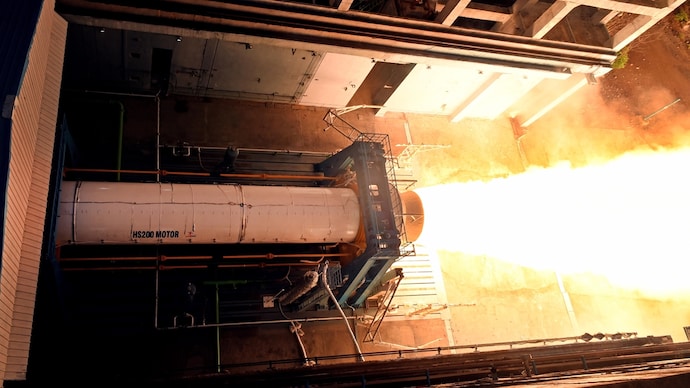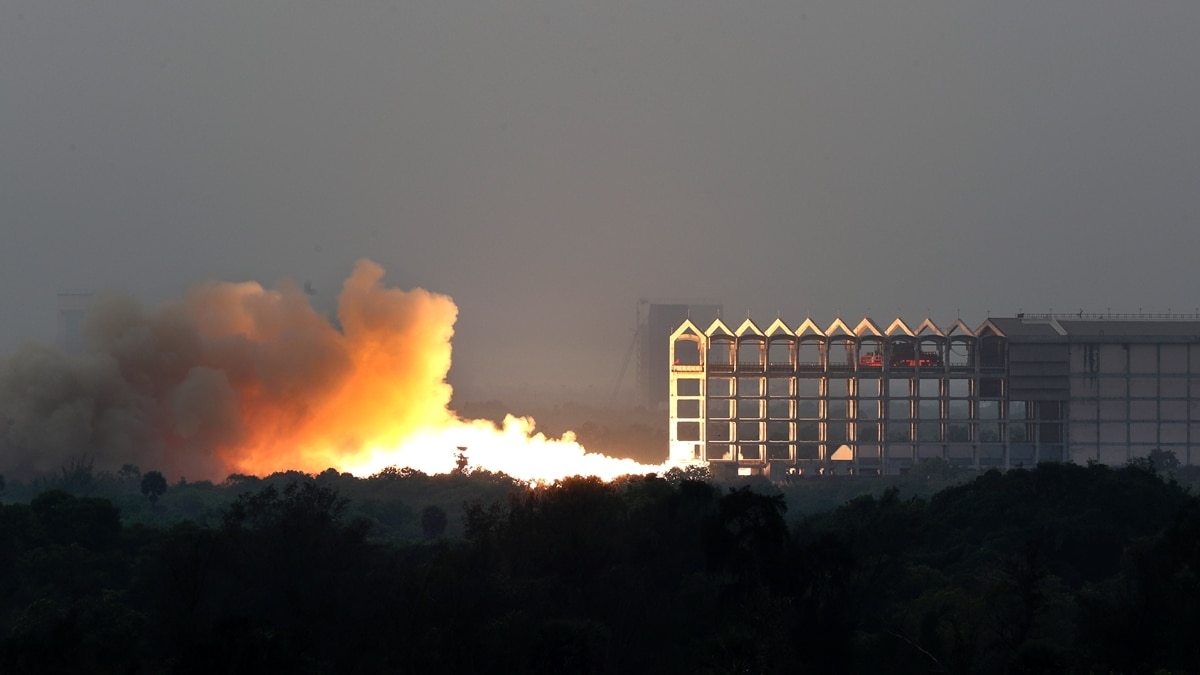Isro successfully tests rocket that will power India's Gaganyaan mission
Isro has conducted a static fire test of the boosters that will liftoff the Gaganyaan mission from the ground.

The Indian Space & Research Organisation (Isro) on Monday successfully conducted a static fire test of the boosters that will power India's maiden astronaut mission, Gaganyaan. The space agency conducted the static fire test in the wee hours as propellants burned to mark a major milestone for the mission.
During the test the solid rocket booster HS200 was fired at 7:20 am at the Satish Dhawan Space Centre in Sriharikota, Andhra Pradesh. The HS200 rocket booster is the human-rated version of the well-proven S200 rocket booster of GSLV Mk III satellite launch vehicle, popularly known as LVM3.
"The successful completion of this test marks a major milestone for the prestigious human space flight mission of ISRO, the Gaganyaan, as the first stage of the launch vehicle is tested for its performance for the full duration," Isro said in a statement.
The S200 motor which is the first stage of the LVM3 launch vehicle intended for launching a 4000 kg class of satellites to Geosynchronous transfer orbit, was configured as a strap-on rocket booster. Design and development of the HS200 booster were completed at Vikram Sarabhai Space Centre (VSSC), Thiruvananthapuram, and propellant casting was completed at SDSC, Sriharikota.

Isro said that decision to use LVM3 to launch Gaganyaan was taken based on the successful launch pedigree of this vehicle during the Chandrayaan mission. The vehicle has gone through several improvements for launching the manned mission.
"A host of design improvements that were aimed at increasing the safety and reliability of various systems were implemented in the S200 booster like all other systems. These include additional safety features for motor case joints and robust insulation and ignition systems. The control system used in this booster employs one of the world’s most powerful electro-mechanical actuators with multiple redundancies and safety features," Isro added.
For the static fire test, the HS200 booster loaded with 203 tons of solid propellant was tested for a duration of 135 seconds. The 20 m long and 3.2 m diameter booster is the world’s second-largest operational booster with solid propellant. Scientists measured about 700 parameters and concluded that the performance of all the systems was normal.
Out of the three propulsion stages of LVM3, the human-rated versions of the second stage known as L110-G loaded with liquid propellant and the third stage C25-G with cryogenic propellant are in the final phase of qualification including tests with static firing.
